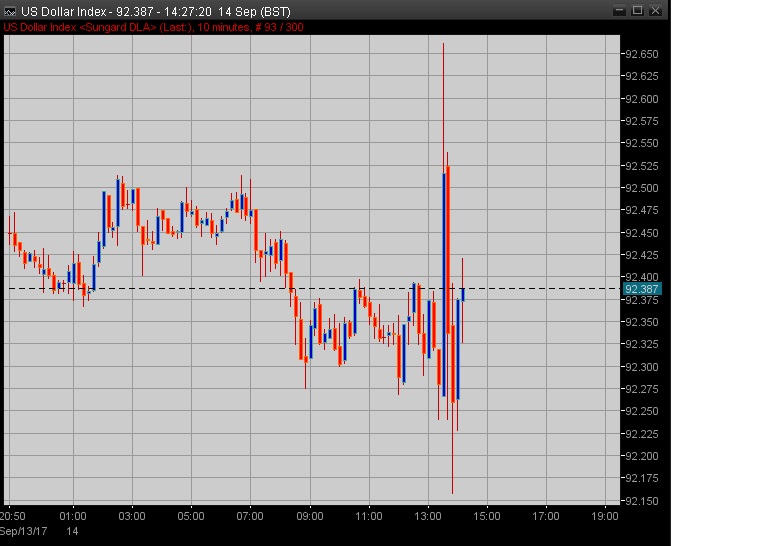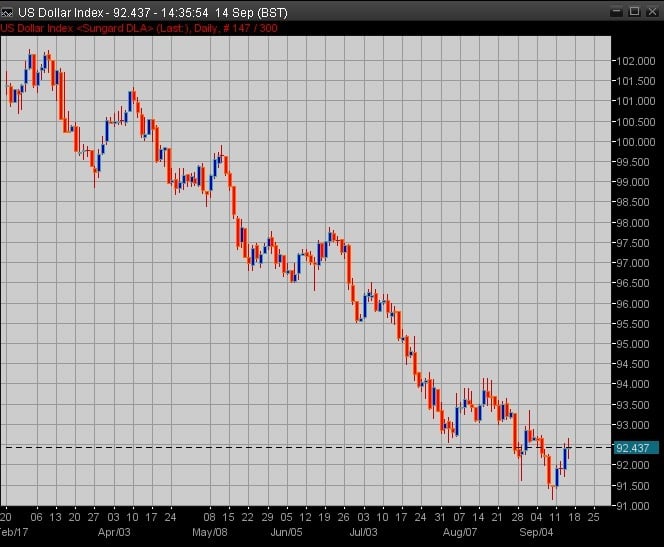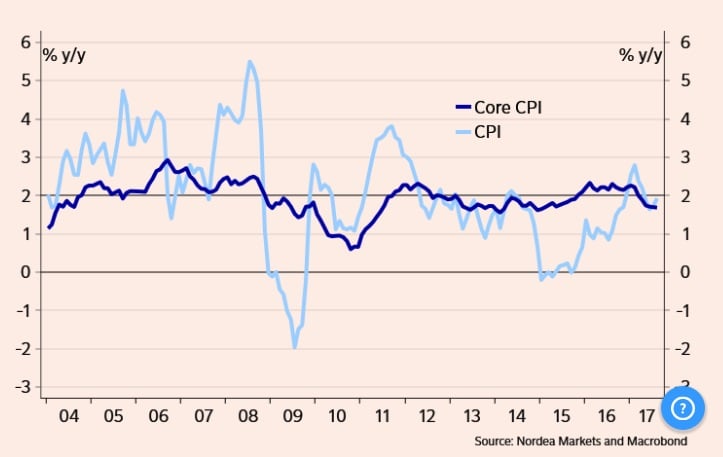Dollar Whipsaws After US August Inflation Reopens Fed Debate
- Written by: James Skinner
-

Headline inflation rose markedly, due to higher gasoline prices, although core inflation was also seen picking up.
The Dollar whipsawed in noon trading Thursday after US inflation strengthened in August, reopening the debate over whether the Fed will push through another rate hike this year.
Headline consumer price inflation rose by 0.4%, faster than the 0.3% gain anticipated by economists, according to the latest Bureau of Labour Statistics data.
Core inflation, which removes volatile food and energy prices from the basket, also strengthened but with prices rising at a more modest pace of 0.2%. Nonetheless, this is up from 0.1% in July, and in line with economist estimates. This follows a series of underwhelming numbers during the summer months.
“US inflation showed more signs of life in August...Fed officials will be more focused on the monthly changes in core inflation, and today's 0.2% print was enough to keep a December rate hike on the table,” says Royce Mendes, an economist at CIBC Capital Markets.
Thursday's headline inflation number is less relevant as it was influenced predominantly by a surge in gasoline prices during the month of August, itself brought about by Hurricane Harvey having taken more thyan 10% of America's refinery capacity offline. Nonetheless, core inflation is also strengthening.
The Euro-to-Dollar rate slid by more than 60 points to trade at a session low of 1.1836, before paring losses and then trading higher.

Dollar-Yen gained 0.10% to trade above 111.0 for the first time since July, before dropping, while the Dollar index also whipsawed in the immediate aftermath.

US Dollar Index at 10 minute intervals. Source: Netdania.
Consensus was beginning to suggest expectations of another Fed rate hike had all but dissipated, given summer weakness of inflation and uncertainty over the 2018 composition of the Federal Open Market Committee, both of which conspired to drive the Dollar index to a 10% loss for the year to date.

"The short-term price dynamics corroborate our view that inflation rates have bottomed," says Dr Harm Bandolz, chief US economist at UniCredit. "This leaves the Fed on track to announce the balance sheet normalization at next week’s meeting, and keeps a December rate hike in play."
A Faltering Consensus Leads To Different Pages
Price action in the immediate aftermath of the release suggests not everybody is on the same page about when the Fed will next hike rates, as does the divergent nature of commentary coming from economists and strategists, both emblematic of a faltering consensus.
"August’s report confirms that the earlier decline in core CPI inflation was largely due to idiosyncratic factors that are now fading or going into reverse," says Paul Ashworth, chief North American economist at Capital Economics. "We still don’t expect the Fed to hike interest rates again this year, but it will return to tightening policy more aggressively next year."

US Headline and Core Inflation trends. Source: Nordea Markets.
Economists at Nordea Markets chimed with Capital Economics' Ashworth Thursday, saying the core inflation rate of 1.7% annualised may be insufficient to convince Fed rate setters that 2017's slowdown is transitory.
Overall, we believe the soft inflation prints will have no implications for when the Fed will announce plans to begin normalising its balance sheet, which we expect to occur next week, says Johnny Bo Jakobsen, an economist at Nordea. "Still, inflation will have to improve for the Fed to justify raising interest rates again this year."
Jakobsen suggests that core inflation may fall again before the year is out owing to "base effects" of price changes that took place last year but that it should pick up meaningfully once into 2018.




